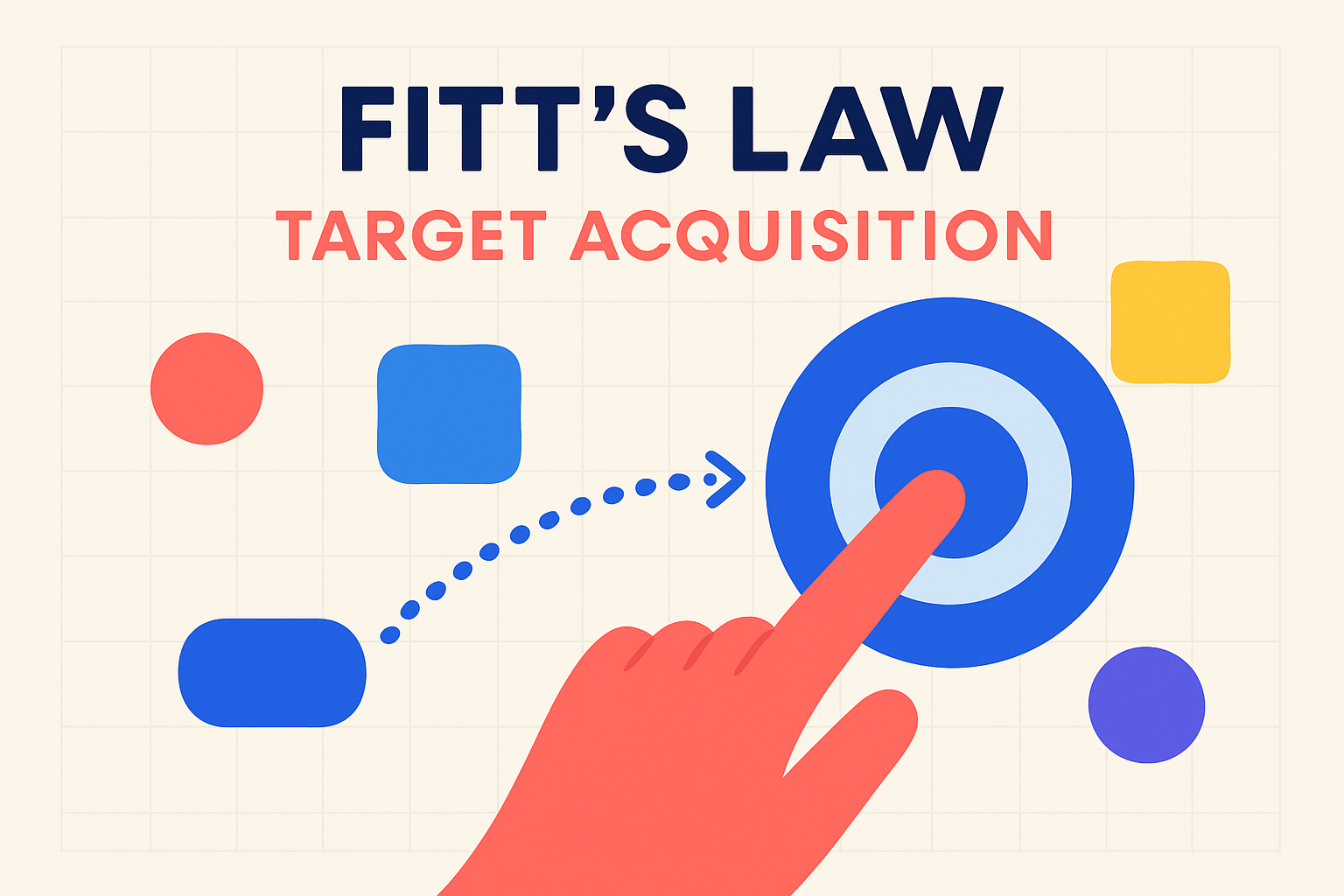Module 6: Fitt’s Law – Target & Distance

Continuing our exploration of psychological principles in design, Module 6 introduces Fitt's Law. This law is a predictive model of human movement, primarily used in human-computer interaction and ergonomics, that quantifies the time it takes to move to and select a target. For designers, Fitt's Law provides a powerful framework for understanding how the size of a target and the distance to that target affect usability. This module will break down the core concepts of Fitt's Law, explaining its mathematical basis and its practical implications for designing interactive elements like buttons, icons, and other clickable targets. We will discuss strategies such as making important interactive elements large and easily accessible, and consider how Fitt's Law applies differently to mobile and desktop interfaces, including the concept of thumb zones. Finally, we'll examine its crucial role in the effective placement of calls-to-action. By grasping Fitt's Law, you'll be better equipped to design interfaces that are not only visually appealing but also efficient and comfortable to use.
Fitt’s Law: Size + Distance = Speed
Fitt's Law, developed by psychologist Paul Fitts in 1954, states that the time required to rapidly move to a target area is a function of the ratio between the distance to the target and the width of the target. In simpler terms: larger targets that are closer to the user's starting point are quicker and easier to hit, while smaller targets that are further away take more time and effort. The mathematical formula is T = a + b log₂(D/W + 1), where T is the average time taken to complete the movement, 'a' and 'b' are constants that depend on the specific input device and conditions, D is the distance from the starting point to the center of the target, and W is the width of the target measured along the axis of motion. While designers don\t typically need to perform these calculations, the core implication is intuitive and immensely valuable: to make an interactive element easy to click or tap, you should make it reasonably large and/or place it close to where the user's attention or cursor is likely to be.
Make Important Buttons Big and Close
The most direct application of Fitt's Law in interface design is the principle of making important interactive elements, especially buttons, sufficiently large and strategically placed. Primary calls-to-action (CTAs) like "Submit," "Add to Cart," or "Download" should be visually prominent and have a generous clickable area. This reduces the precision required from the user, minimizing errors and speeding up interaction. Similarly, frequently used functions or navigation elements should be easily reachable. For example, on a desktop interface, placing common actions in a toolbar near the top of the screen or in a context menu that appears near the cursor's current position leverages Fitt's Law. Conversely, making destructive actions (like "Delete" or "Cancel") slightly smaller or requiring an extra confirmation step can be a deliberate use of Fitt's Law to prevent accidental clicks, by making them slightly harder to target.
UI Design Patterns (Mobile vs Desktop), Thumb Zones
Fitt's Law applies to both desktop (mouse-based) and mobile (touch-based) interfaces, but its implications can differ due to the nature of interaction. On desktop, the cursor can move freely across the screen, but the edges and corners of the screen are particularly easy to acquire due to the "pinning" action of the screen boundaries (effectively making targets at the edge infinitely wide in one direction). This is why application menus are often at the very top of the screen.
On mobile devices, interaction is primarily through touch, and Fitt's Law is crucial for designing tappable targets. Fingers are less precise than a mouse cursor, so touch targets generally need to be larger. Apple recommends a minimum target size of 44x44 points, while Android suggests 48x48dp. Furthermore, the concept of "thumb zones" becomes critical. Most users hold their phones with one hand and use their thumb to interact. Areas easily reachable by the thumb (often an arc across the lower and middle portions of the screen) are prime locations for frequently used actions and navigation elements. Placing important controls outside these comfortable thumb zones can lead to awkward hand movements, slower interaction, and increased risk of dropping the device. Designers must consider these ergonomic factors and how Fitt's Law interacts with them to create comfortable and efficient mobile experiences.
Placing Calls to Action (CTAs)
The placement and design of Calls to Action (CTAs) are heavily influenced by Fitt's Law. A CTA button needs to be easily noticeable and effortless to click or tap. This means it should be sufficiently large, have clear visual contrast with its surroundings, and be placed in a logical position within the user's workflow or scanning pattern (as discussed in relation to F-Pattern and Z-Pattern). For example, after a user fills out a form, the "Submit" button should be close to the last input field and large enough to be easily targeted. On a product page, the "Add to Cart" button should be prominent and readily accessible. By making CTAs easy to find and interact with, designers can significantly improve conversion rates and overall user satisfaction, directly applying the principles of Fitt's Law to guide users towards desired outcomes.